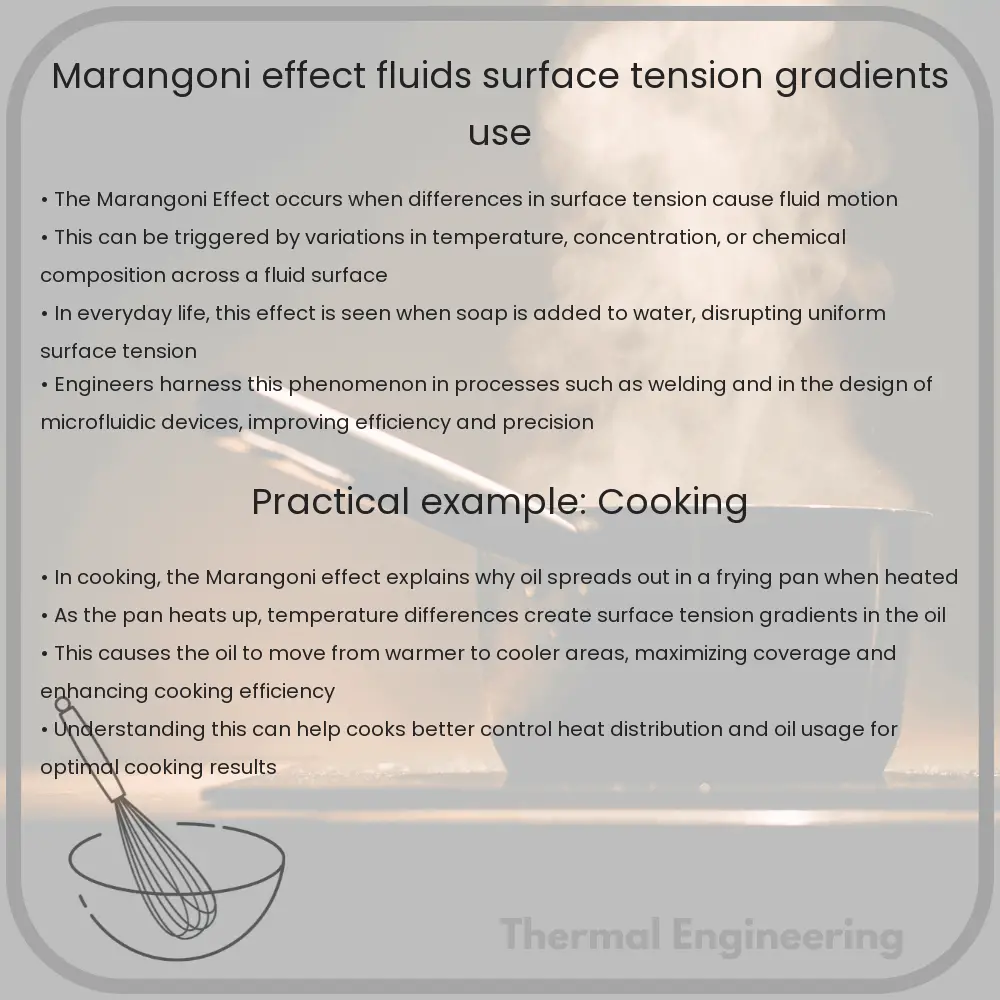Learn how the Marangoni effect influences fluid dynamics through variations in surface tension, impacting biomedical engineering and material science.

Understanding the Marangoni Effect: Surface Tension Gradients & Their Applications
The Marangoni effect is a fascinating phenomenon in fluid dynamics that occurs due to variations in surface tension along an interface between two fluids. This effect can cause fluid to move along the surface, driven by differences in surface tension which themselves may be caused by concentration gradients of surfactants, temperature variations, or the presence of different substances.
What Exactly is Surface Tension?
Surface tension is a physical property of fluids that describes the elastic tendency of a fluid surface which makes it acquire the least surface area possible. This tension is a result of the cohesive forces between liquid molecules, which are significantly affected by the adjacent molecules. In simpler terms, surface tension is what allows insects like water striders to walk on water without sinking, or the formation of droplets of water on a smooth surface.
Exploring the Marangoni Effect
When a gradient in surface tension exists, such as when part of a fluid interface heats up while another part remains cooler, the Marangoni effect can be observed. Fluid will flow away from regions of lower surface tension towards regions of higher surface tension. This flow can be mathematically represented as:
\[ \text{Flow direction} = \nabla \gamma \]
Where \( \gamma \) is the surface tension and \( \nabla \gamma \) signifies the gradient of the surface tension.
Historical Insight
The effect was named after the Italian physicist Carlo Marangoni, who studied the impact of temperature gradients on surface tension in his doctoral dissertation in 1865. However, the phenomenon was first noted by James Thomson (brother of Lord Kelvin) in 1855.
Applications of the Marangoni Effect
- Material Science: In the field of material science, the Marangoni effect is utilized to create defect-free surfaces and films. It’s especially important in processes like welding and the annealing of metals, where controlling the microstructure of materials is crucial.
- Biomedical Engineering: The creation of tissue scaffolds often uses the Marangoni effect to arrange cells in certain patterns, exploiting differences in surface tension to manipulate cell positioning without physical contact.
- Microfluidics: Small-scale fluid handling benefits from the Marangoni effect for the manipulation and mixing of liquids in devices like lab-on-a-chip technologies, which require precise control of chemical concentrations.
- Environmental Engineering: It is also proposed for cleanup methods, such as oil spill recovery where it can be used to corral surface oil films more effectively.
Conclusion
The Marangoni effect represents a significant phenomenon in both natural and industrial contexts. By understanding and harnessing this effect, scientists and engineers can control and manipulate various processes that range from microscale biological assemblies to large-scale industrial applications. As research continues to evolve, the potential for discovering new applications of the Marangoni effect grows, further opening doors for innovation in technology and beyond.